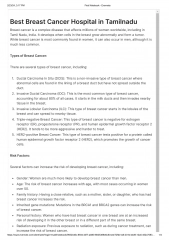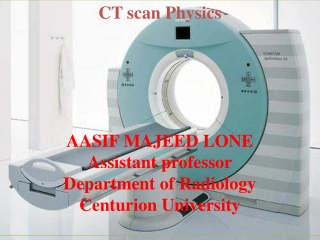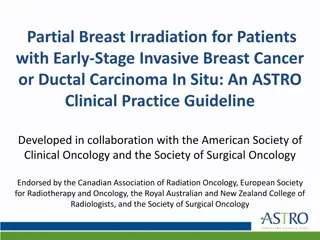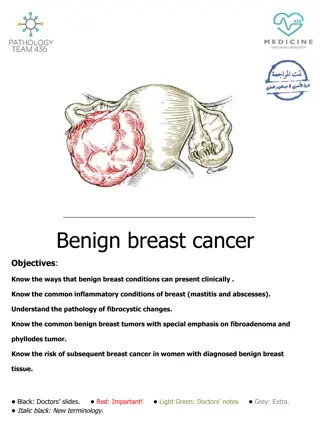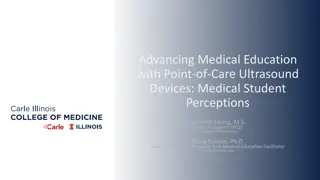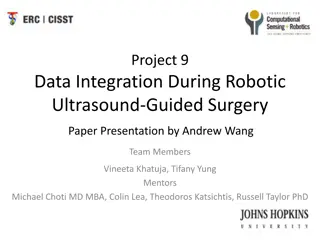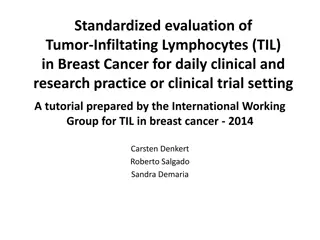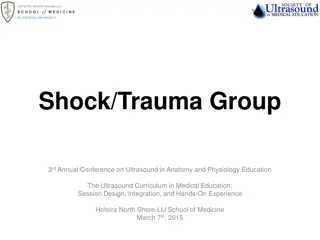Understanding Breast Ultrasound: Anatomy, Patient Preparation, and Scanning Protocol
This informative content delves into breast ultrasound, covering topics such as breast anatomy, patient preparation and positioning, scanning protocol, required images, and normal sonographic appearances. It provides valuable insights into the structure and composition of the breast, guidelines for conducting ultrasounds, and details on interpreting ultrasound images for medical professionals and students.
Download Presentation

Please find below an Image/Link to download the presentation.
The content on the website is provided AS IS for your information and personal use only. It may not be sold, licensed, or shared on other websites without obtaining consent from the author. Download presentation by click this link. If you encounter any issues during the download, it is possible that the publisher has removed the file from their server.
E N D
Presentation Transcript
Breast Ultrasound LAMYA ALLUHAYDAN
BREAST ANATOMY The breast is a mass of glandular ,fatty and fibrous tissues. Positioned over the pectoral muscles of the chest wall. Attached to the chest wall by Cooper s ligaments.
The BREAST composed of Lobes and Lobules: - Each breast has 15 to 20 sections (lobes). - Each lobe made up of many smaller structure(lobules). - That End in tiny bulbs that produce milk. Ducts: - Lobes, lobules & bulbs are linked by network of thin tubes(ducts). - DUCTS: carry milk from bulbs to the Areola . - They join together into larger ducts ending at the nipple.
Patient Preparation&Position Not require any special preparation. Before the exam begins , examine the breast to get a clear idea of where the mass is and obtain the clinical history. Supine oblique or Supine position is recommended to reduce breast thickness and improve visualization of deeper tissues. Both arms should be elevated behind the head to stretch the pectorals muscle for better fixation and immobilization of the breast. Sittings erect.
Breast Scanning Protocol Linear array transducer, frequency should 7.5 MHz or higher Begin the scanning in 12 o clock position, so the base of the transducer toward the nipple and the end of the transducer facing outward so that the nipple area is closest to the top the imaging screen. Transducer orientation is set up so that the breast is viewed in section from the nipple outward where the orientation notch if located. Scan around the breast in clock-wise manner , covering all anatomy including the axillaries region. Always sweep through the exilla to look for enlarge nodes Scan the nipple in longitudinal and transverse section. Scanning the other breast regions in long.&trans. Planes if it necessary.
Required Image: 12 o clock image(RT or LT) 3 o clock image (RT or LT) 6 o clock image (RT or LT) 9 o clock image (RT or LT) TRANS&LONG image through the nipple(RT<). TRANS&LONG image of the auxiliary region(RT<).
Normal sonographic appearance Skin and retro mammary layer: hyperechoic lines (2mm thick). Nipple: hyperechoic + internal nipple appearance is quite variable Areola: slightly less echogenic than the nipple and the skin Glandular tissue (the mammary layer): hyperechogenic Fat: seen anterior to the pre-mammary fascia + appears hypoechogenic Cooper s ligaments: seen as hyperechoic band coursing the subcutaneous fat. Pectoralis muscle: posterior structure seen as hypoechogenic Breast implants : Bags containing silicon,the silicon is echo free but conduct sound faster speed than normal soft tissue.


